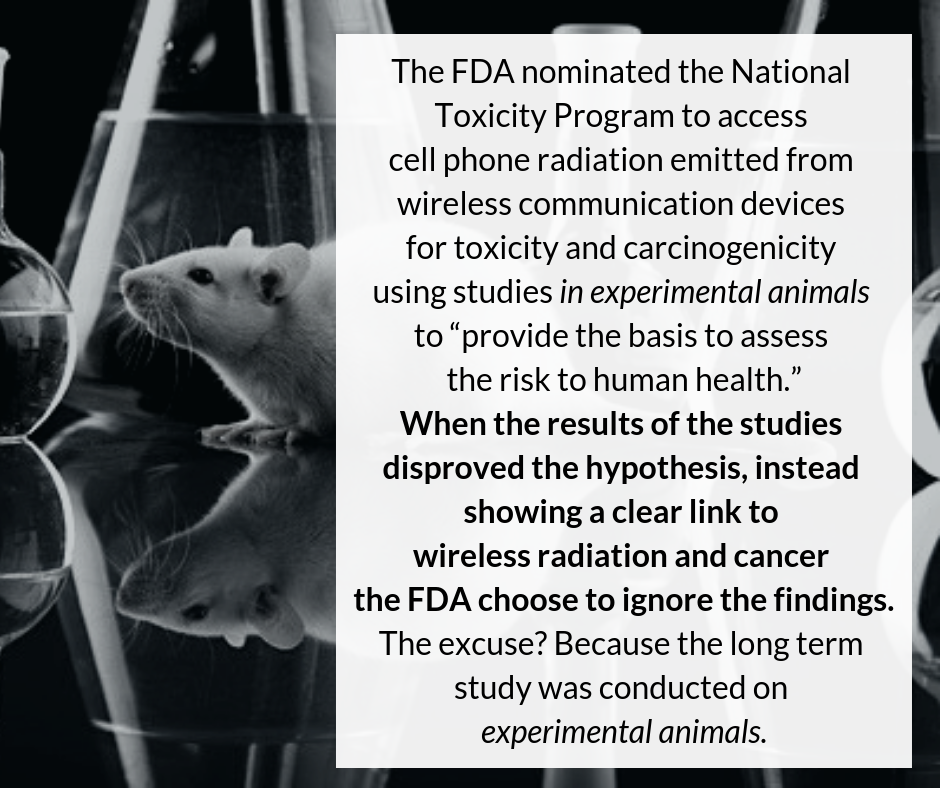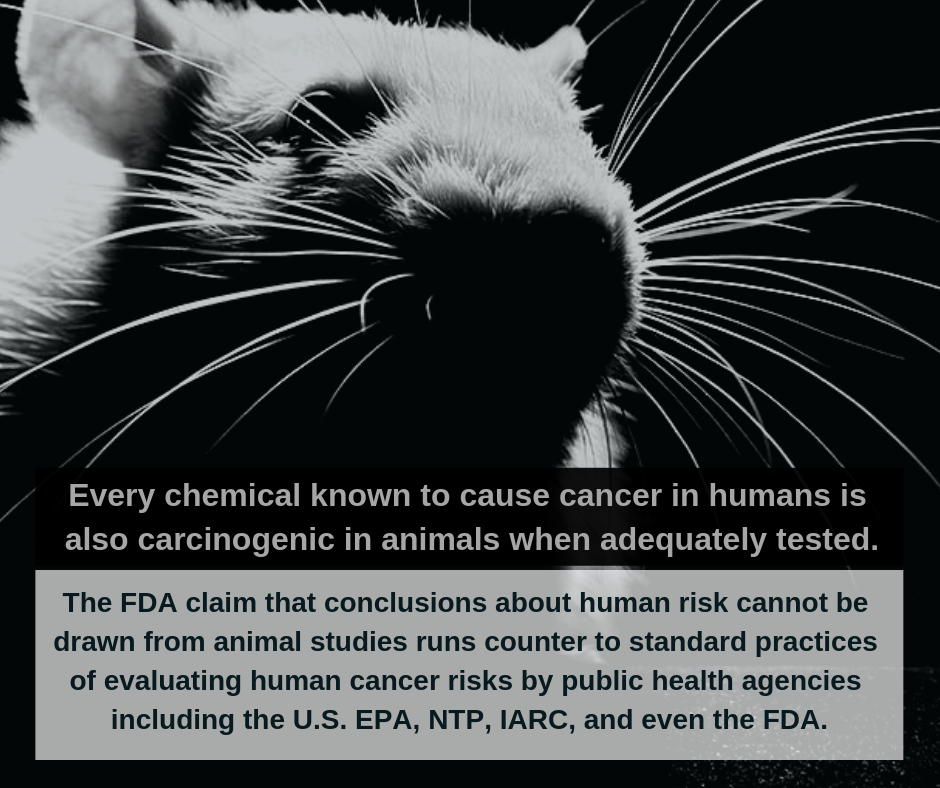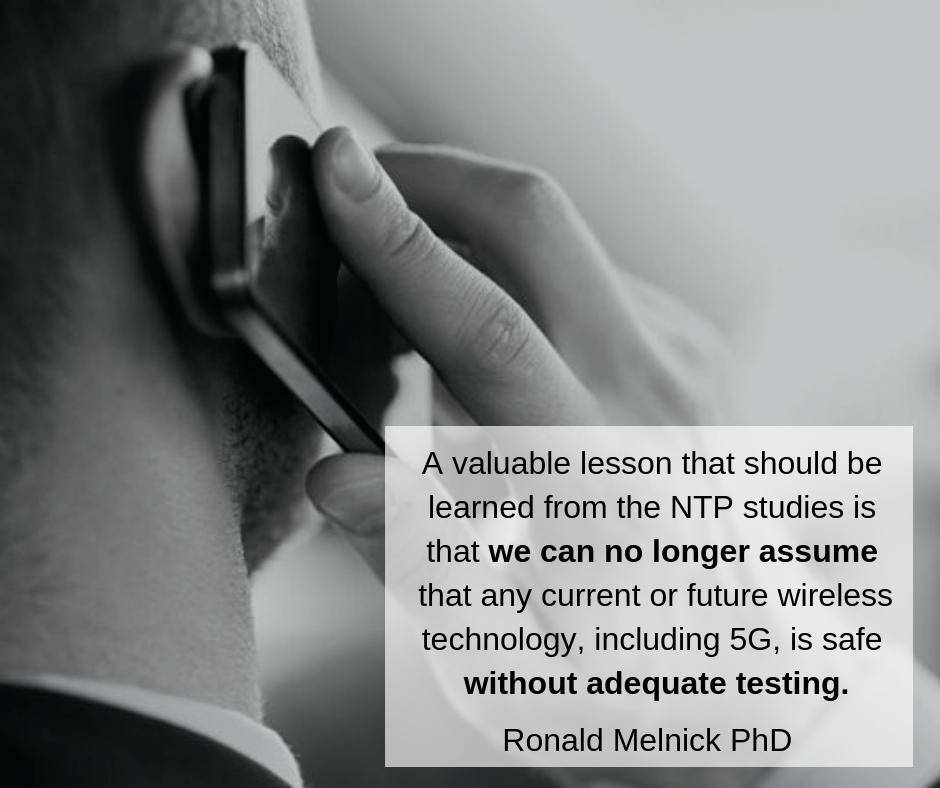Another Study Showing a Cell Phone-Cancer Link Downplayed by the FDA

There’s an estimated 327.5 million cell phone subscriber in the United States. Recent worldwide studies have linked cell phone radiation to cancer. World Health Organization has labeled it a “possible human carcinogen.” In November 2018, The US National Toxicology Program — an inter-agency government group that’s a part of the National Institutes of Health — released a report that looked at what happened when rats and mice were exposed to cell phone radiation over a two-year period. The results from the $30 million NTP studies demonstrated that cell phone radiation caused Schwann cell cancers of the heart and brain gliomas in rats, as well as DNA damage in the brain.
“We cannot assume any current or future wireless technology is safe without adequate testing. In the interest of public health, government agencies must utilize results from these well-conducted health effects studies and issue clear recommendations to the public on how to reduce exposures to agents that are hazardous to our health. The NTP studies clearly shows that non-ionizing radiation can cause cancers and other adverse health effects.”

The Link: radiation from cell phones and cancer
Every cell phone emits radio frequency energy, which is also known as radio waves. “This is a form of non-ionizing radiation,” said the National Cancer Institute. Tissues in the human body may absorb this energy when being in contact with antennas. The NTP studies were conducted to test the widely-held assumption that cell phone radiofrequency radiation could not cause cancers or other adverse health effects (other than by tissue heating) because this type of radiation (non-ionizing) did not have sufficient energy to break chemical bonds.
A theory suggests that exposure to ionizing radiation may increase the risk of developing cancer, said the NHI. Some studies have also evaluated the effects of x-rays, radars and microwave ovens. However, none of them have provided conclusive results.
The NTP findings that cell phone radiation caused cancers in the heart and brain, DNA damage in brain cells, heart muscle disease and reduced birth weights clearly demonstrate that the assumption that non-ionizing radiation cannot cause cancer or other health effects is wrong.
The Findings: Clear Link to Cancer that FDA Ignores

In NIH’s news release, NTP senior scientist John Bucher said, “We believe that the link between radio frequency radiation and tumors in male rats is real and the external experts agreed.” But, amazingly, the FDA says it disagrees with this carefully conducted, peer-reviewed study’s finding of clear evidence of carcinogenicity.
According to Jeffrey Shuren, Director of the FDA’s Center for Devices and Radiological Health, “these findings should not be applied to human cell phone usage,” adding that “we believe the existing safety limits for cell phones remain acceptable for protecting the public health.”
While expressing this opinion, Dr. Shuren neglects to note that the International Agency for Research on Cancer (IARC), a part of the World Health Organization, classified radio-frequency radiation from wireless devices as a “possible human carcinogen” based largely on findings of increased risks of gliomas and Schwann cell tumors in the brain near the ear in humans after long-term use of cell phones. Thus, the same tumor types are elevated in both animals and humans exposed to cell phone radiation.

This FDA’s position is quite unusual because it was this agency that nominated cell phone radiation emitted from wireless communication devices to the NTP for toxicity and carcinogenicity studies in experimental animals to “provide the basis to assess the risk to human health.”
At that time, the FDA reasoned that “existing exposure guidelines are based on protection from acute injury from thermal effects of RFR [radiofrequency radiation] exposure and may not be protective against any non-thermal effects of chronic exposure.”
By adopting this new position and ignoring the NTP’s results, the FDA is clearly shirking its responsibility of assessing the impact on human health of radio-frequency radiation.
The Rats: Why are rat cancer models used in science?

For more than 150 years, researchers have used rat models to conduct health research. Rat cancer models have provided “remarkable” information to understand better “cancer triggers, mechanisms, and therapeutics,” said the NCI.
Within the last decade, investigators have added genetic mapping, gene expression, and computational analysis, to rat cancer models. For instance, genes associated with breast cancer in the creatures, are similar to those in humans.
Merely claiming that conclusions about human risk cannot be drawn from animal studies runs counter to standard practices of evaluating human cancer risks by public health agencies including the U.S. EPA, NTP, IARC, and even the FDA. –
The Study: Exposure Limits in Study only Slightly Higher than FCC limits
Exposure levels in the brains of rats in the NTP study were similar to or just slightly higher than the FCC’s limit for maximum permissible exposure to local tissue exposures from cell phones held next to the head.
This point is most important because, when an individual uses a cell phone, body tissues located nearest to the cell phone antenna receive much higher exposures than parts of the body that are located distant from the antenna.
The selection of the highest exposure levels in the NTP studies was based on the same criterion used by the Federal Communications Commission (FCC) to establish exposure guidelines for radio-frequency radiation. Misleading statements by Dr. Shuren about the utility of the NTP studies for evaluating human cancer risk were debunked in my previous publication.
The FDA needs to fulfill the intent of their nomination to the NTP and conduct a quantitative risk assessment so that the FCC can develop health-protective exposure standards.
For example, what is the level of exposure associated with the cancer risk of one per thousand or one per million people?
Also, health concerns for children may be higher than that for adults due to increased penetration of cell phone radiation within the brains of children. Merely ignoring the cancer data from the NTP studies is not in the interest of public health. Because of the widespread use of cell phones among the general public, even a small increase in cancer risk would have a severe public health impact.
“The NTP tested the hypothesis that cell phone radiation could not cause health effects and that hypothesis has now been disproved,” Ronald Melnick, “The experiment has been done and, after extensive reviews, the consensus is that there was a carcinogenic effect.”
The Study: Duplicated Results of Cancer Development
We also can no longer state that adverse effects of radiofrequency radiation are not replicated. Increases in tumors from cell phone radiation have indeed been replicated in several studies. The Ramazzini Institute large-scale rodent study found increased Schwannomas in the heart at lower radiation levels than in the NTP studies. The Lerchl et al., 2015 study also found radiofrequency radiation (at significantly lower doses than the NTP studies) promoted cancer development, with evidence for a heightened synergistic impact when combined with a known carcinogen. It should also be noted that the adverse health effects caused in rats exposed to GSM-modulated radiofrequency radiation were also observed in rats exposed to CDMA-modulated radiofrequency radiation. EHTrust.org
Melnick recently published an article in the journal Environmental Research debunking widely circulated criticisms of the NTP study and also released a scientific criticism of the way the NTP study was treated by the International Commission on Non-Ionizing Radiation Protection (ICNIRP).

Ronald L Melnick, Ph.D., was a senior scientist for 28 years with National Institutes of Health leading studies on numerous industrial chemicals and directed the design of the National Toxicology Program/National Institute of Environmental Health Sciences’ Cell Phone Radiofrequency Radiation Studies. Melnick was Director of Special Programs in the Environmental Toxicology Program at the National Institute of Environmental Health Sciences (NIEHS), National Institutes of Health, USA and is now retired and Senior Advisor to Environmental Health Trust.
Learn More About Cell Phone Radiation from the EHTrust website
Ronald L Melnick, Ph.D. presenting to the National Institutes of Health National Toxicology Program Cell Phone Radiation Study Peer Review.
Portions of this article originally appeared at: https://thehill.com/opinion/healthcare/416515-theres-a-clear-cell-phone-cancer-link-but-fda-is-downplaying-it and https://ehtrust.org/statement-by-ronald-melnick-phd-on-the-national-toxicology-program-final-reports-on-cell-phone-radiation/
U.S. National Toxicology Program speaks: Cancer and cell …. https://www.pulseheadlines.com/u-s-national-toxicology-program-speaks-cancer-and-cell-phones/33046/




